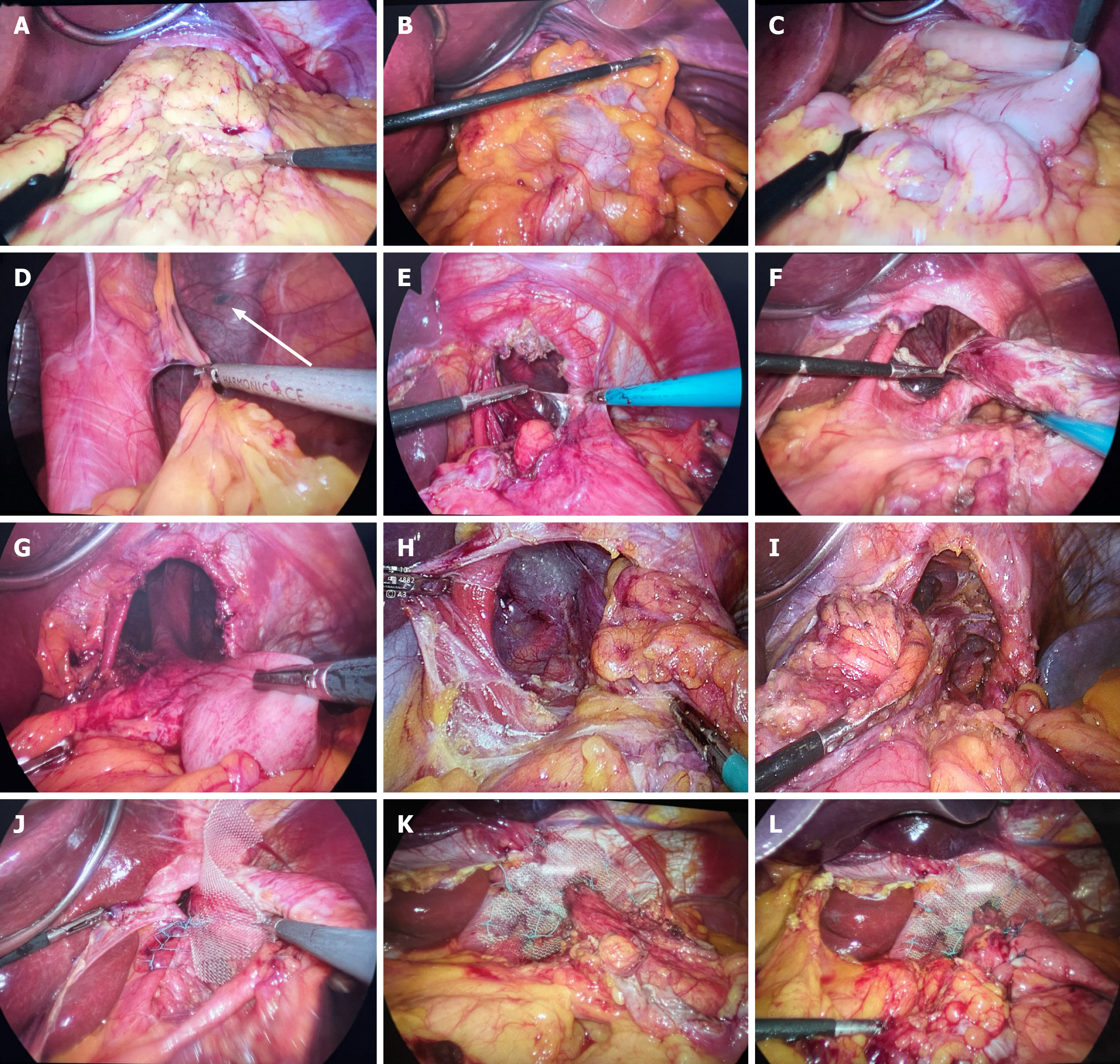Copyright
©The Author(s) 2025.
World J Gastrointest Surg. Jul 27, 2025; 17(7): 106365
Published online Jul 27, 2025. doi: 10.4240/wjgs.v17.i7.106365
Published online Jul 27, 2025. doi: 10.4240/wjgs.v17.i7.106365
Figure 1 Surgical approach results.
A-D: Mobilization and complete evacuation of the hernia contents into the abdominal cavity (A: Type IV hiatal hernia; The esophageal hiatus is filled with great omentum and abdominal organs; B: Reduction of the transverse colon; C: Reduction of the stomach; D: Mobilization of the tissues inside the hernia sac in the mediastinum. The arrow shows the tissue of the left lung covered with the hernia sac); E-G: Mobilization of the neck of the hernia sac at the level of the diaphragmatic crura (E: A section of the neck of the hernia sac; F: Mobilization is performed, and the grasper fixes the edge of the hernia sac; G: The hernia sac is left in the mediastinum, and the neck of the sac is mobilized at the level of the diaphragmatic crura; H and I: Mobilization of the hernia sac); H: The hernia sac is mobilized and pulled down between the right crura and the esophagus; I: The hernia sac is mobilized and pulled down between the left crura and the esophagus; J-L: Reinforcement of the esophageal hiatus and fundoplication (J: Posterior crurorrhaphy was performed with nonabsorbable sutures; K: Polypropylene mesh was fixed around the esophagus; L: Nissen fundoplication was performed).
- Citation: Hakobyan VM, Petrosyan AA, Yeghiazaryan HH, Aleksanyan AY, Safaryan HH, Shmavonyan HH, Papazyan KT, Ayvazyan KH, Davtyan LG, Khachatryan AA, Sargsyan GS, Stepanyan SA. Removal of the sac during surgery for the repair of “giant” paraesophageal hernias. World J Gastrointest Surg 2025; 17(7): 106365
- URL: https://www.wjgnet.com/1948-9366/full/v17/i7/106365.htm
- DOI: https://dx.doi.org/10.4240/wjgs.v17.i7.106365









